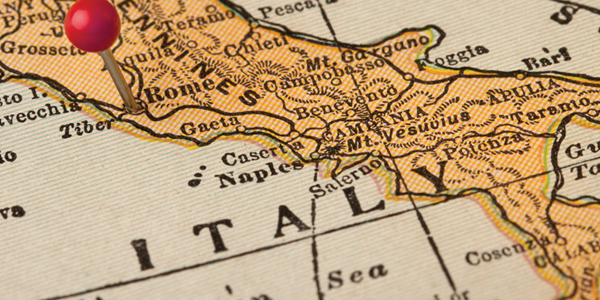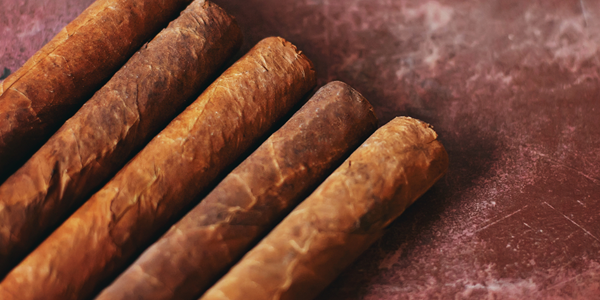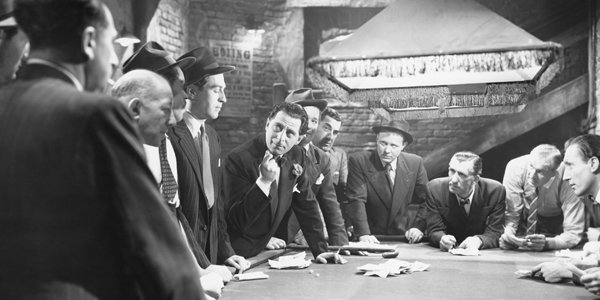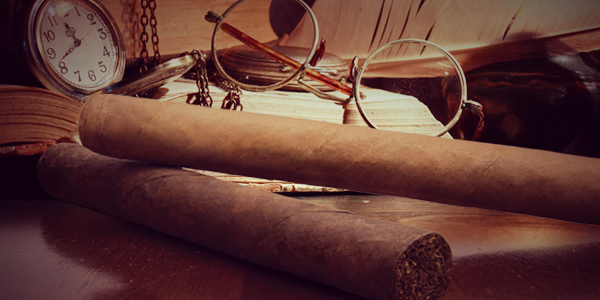Italian Cigars
Most often with the flick of his thumbnail on a match, Clint Eastwood would light up his short cigar nearly 40 times in the trilogy of “spaghetti Western” movies, A Fistful of Dollars; For a Few Dollars More; and The Good The Bad And The Ugly. The cigar that Eastwood put into the corner of his mouth when things turned serious was usually a Parodi Amezzati, an Italian-style cheroot (open at both ends) made in the US mostly of Kentucky tobacco. Eastwood made the cigar look as sinister as his character. Or was it the other way around? In any case, those movies introduced me to the short, strong, somewhat bitter Italian cigar known as a Toscano.
Italian Cigar Brands
When it comes to Italian cigar brands, there’s really only one: Toscano. It’s a monopoly of the Italian state. In the US, two Italian-style cigars are made by one company in Pennsylvania, the Parodi and the De Nobili. Generally, all these Italian cigars, regardless of where they’re made, are referred to as Toscanos. The word “toscano” means Tuscan, as in from the state of Tuscany in Italy.
The Toscano
The important thing to know about the Toscano cigar is that it is probably not like any premium cigar you’re smoking right now. This small Italian cigar is best described as a dry, hard, fire-cured cigar with a Kentucky tobacco wrapper and, usually, short-filler. Traditionally, the Toscano is produced as an elliptical cigar that tapers at both ends, though today there are many different shapes. Call it an Italian Perfecto. It is meant to be cut in half before either half is then smoked. In 1948, 33 years after the Toscano was essentially born, the Amezzato was introduced. The word technically means mezzanine, but in this case it’s used to describe a cigar that is half of the traditional Toscano. That’s the vitola Clint Eastwood has stuck in his mouth.
How the Toscano Is Made
Kentucky tobacco leaf is usually one we recognize as pipe tobacco. For the Toscano, Kentucky is grown in several regions of Italy. For wrapper leaf, Kentucky from North America is often used in various Toscano lines because it is a wider leaf. There is no binder leaf here. The Kentucky grown in Southern Italy, particularly Campania and Umbria, is known for their sweetness and is used in the Toscano Garibaldi and Toscanello Garibaldi.
The tobacco is first fermented by soaking the leaves. More on that in a bit. During fermentation, the leaves are flame-cured by burning oak and beech woods for two to three weeks. The moisture is regulated using air valves, and temperature is controlled by increasing or decreasing the wood fire.
The wrapper is then rolled onto the filler tube. Many of the cigars are machine-made, but the higher-quality cigars are rolled by hand. A sigaraia, or roller, makes about 520 cigars a day. After being rolled, the cigars are dried in an aging room. The length of aging depends on the type of cigar. Some of the higher-quality Toscanos are the Il Moro, Il Presidente and Originale.
Appearance
All Toscano cigars are rugged in appearance. The wrapper is veiny and bumpy, though not at all oily. It’s quite dry. The cigars are generally quite dark.
Flavor
The Toscano is generally quite strong, though one can detect coffee and wood notes. Creaminess is not a trait I’ve tasted in these. Sometimes a sweetness comes through. In lighter blends, you might find some citrus. As it gets into the final third, the pepper becomes stronger and so does the coffee. Some, however, find a taste closer to something that has been burned. There is a lot of acidity in the smoke.
If you have a super-refined palate and are accustomed to strong cigars, you could enjoy these more than most.
The movies, and not just those spaghetti Westerns, might offer some clues here. In a 1959 film, Anatomy of a Murder, Jimmy Stewart, playing a lawyer, offers his “Italian cigars” to a friend. The friend declines and responds, “Those stinkweeds are another sign of your decadence.”
In a 1998 British TV version of the Sherlock Holmes story, Holmes and Watson are dining in an Italian restaurant. The sardonic Holmes says to Watson, "Try one of the proprietor's cigars. They are less poisonous than one would expect.”
The Best “Italian” Cigars
The Italian Toscano is made in more than two dozen lines. An American version of the Toscano, with about a dozen lines, has been around since the early 1900s, now made in Pennsylvania. If one is asked to rank the Italian cigars available to most, well, here are mine in no particular order. I’m referring to both as “Italian” cigars, irrespective of the country of origin.
The Toscano Assolo is extraordinarily rough in appearance and very dark. The wrapper is US Kentucky with a filler of Italian and US Kentucky. It’s a little larger than others in the family, with the same elliptical shape. Some argue this cigar benefits from time in a humidor, but I have never noted a difference. This cigar is made in Lucca, Italy.
The Ambasciator Italico Torpedo was conceived as a Caribbean-style cigar and its wrapper is a reddish-brown and not as rough as most Toscanos. The tobacco is all Kentucky, with long-filler, but this one DOES carry a binder of Kentucky from Verona, Italy. Still, while it might be somewhat more refined than a traditional Toscano, it has considerable levels of acid and bitterness. This is for the Toscano lover who likes strong Kentucky tobacco and enjoys a bit more complexity as the cigar moves from medium to full power. This one could benefit from aging.
The Parodi Amezzati, a small Italian cigar made in the US by Avanti Cigar Company, is the one Eastwood smoked in the movies. It’s just one half of the usual Toscano, with a Kentucky Dark-Fired wrapper. The wrapper is closer to the color of a premium cigar, but is hugely rough in texture. This is a machine-made cigar with fillers from Kentucky and Tennessee, usually made with tobacco from different crops. I’d call it a medium-bodied cigar in the context of the Toscano. The Parodi Amezzati is made in Pennsylvania where Avanti also makes the De Nobili brand of Italian-style cigars.
Toscano History
As the story is told, the creation of the Toscano was the result of an accident. The official tale is that sometime in 1815 a batch of imported Kentucky tobacco was left outdoors and was completely soaked in an unexpected summer rainstorm. In an effort to save it, the factory used it to produce cheap cigars. Of course, the rain essentially served to accelerate the fermentation of the tobacco. This rapid and strong fermentation ended up giving the Toscano its unique flavor. The process of wetting the tobacco for 15 to 20 days continued. The cigars were put on the market in 1818, made in the Manifattura factory in Florence, Italy, founded by Ferdinand III, the Grand Duke of Tuscany.
Today, Toscano cigars are made by Manifatture Sigaro Toscano SpA, the state monopoly, with factories located in Lucca in Tuscany, and Cava de' Tirreni in Camapania.
An Italian Symbol of Independence
In the 19th century, parts of Italy were at war with Austria, which controlled several Italian states. During the first war of independence in 1848, known as the “Five Days of Milan,” the Italian Toscano was the one smoked by Giussepe Garibaldi, a leader of the fight for freedom. The Toscano then became the cigar preferred by Italian rebels over a similar Austrian cigar. This made the Toscano an iconic symbol of the struggle for Italian independence.
Kentucky Tobacco Takes Root
Around 1850, the Italians began experimenting with growing their own Kentucky tobacco. It took four decades for the cultivation to take hold. The quality would improve over the years and the Toscano factories would then, by about 1900, take in only Kentucky tobacco, which had essentially supplanted other varieties in Italy.
A Final Thought
The nature of Kentucky tobacco is such that one can leave a cigar made from it out at room temperature for years and the cigar will not really change or lose quality. On a visit to the Toscano factory in Lucca, it was explained that the Toscano should ideally hold a humidity level between 12 and 14 percent of the cigar’s weight. This is not so different, for example, from the 12 to 15 percent (of weight) humidity in Cuban cigars. The real difference is in the delicacy of the tobaccos, particularly the wrappers, used in the two styles. The premium Cuban, or Caribbean cigar, as we know, requires attention and changes considerably over time, often becoming better from time in the humidor.






